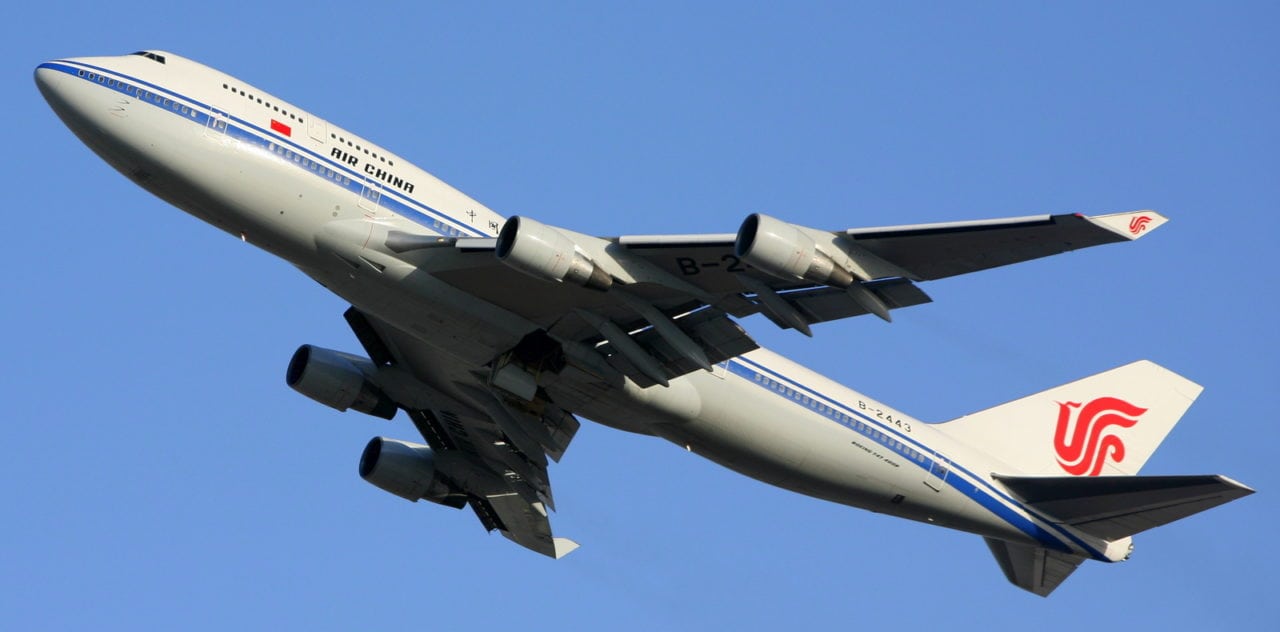[Avionics Today 08-27-2015] While stock market volatility and currency devaluation in China have economists biting their nails, the country’s aviation industry still looks to be on the up in the long term. Alongside Boeing’s latest market forecast, which predicts the Chinese fleet to nearly triple in the next 20 years to the tune of $950 billion, analyst Tom Captain, vice chairman and U.S. aerospace and defense leader for Deloitte, believes that China’s aviation industry is still set to thrive.
 |
| Despite market volatility China’s aviation industry is expected to flourish in coming years. Photo: Wikipedia |
“We may have a temporary setback but, in the long term, we would expect that there will be significant growth in China for air travel as well as airplane production deliveries,” Captain told Avionics Magazine. “China is one of those countries that has so many people, that even as their growth rate diminishes, it will be temporary and there will be a correction and it will return to the 5-plus percent growth in domestic and international travel.”
In the last few years, China has enjoyed a flourishing aviation industry propelled by its growing middle class, and is hailed as the up-and-coming king market for domestic air travel. Recently, however, the country’s banks slashed the value of the Chinese yuan by 3 percent when compared to the U.S. dollar causing a drop in stock prices for companies around the country, including China’s three major airline carriers. Despite this situation, Captain believes the long term growth will remain untouched. “The current instability might provide temporary risk to these forecasts, but over the 20-year horizon I don’t know that there would be an impact,” said Captain. In the shorter term as well, it’s unlikely that the Chinese government will allow the airlines to take significant hits.
“[The market instability] will certainly impact some of the operators, but many of those operators are state-run enterprises and we would expect that, like the Chinese government has done with banks, they would come in to support the national airlines as well,” Captain added.
The airlines are a huge factor in the country’s projected economic growth, according to Captain, as China’s current road and rail infrastructures are lacking when it comes to supporting the estimated 600 million new people entering the middle class in the next 20 years. This new middle class will look to air travel for business and leisure as well as a way to traverse the country.
To support this increase, Boeing forecasts the country will see demand for 6,330 new airplanes over the next 20 years, according to its China Current Market Outlook (CMO) released earlier this week. This includes a particular interest in single-aisle airplanes, for which Boeing predicts 4,630 new aircraft will enter the country in the next two decades, driven by growth in new carriers and low-cost airlines in the region.
Already, China has taken steps to bulk up its aviation infrastructure in order to accommodate its rapidly growing market. “China is building 40 airports right now to support the coming growth,” said Captain, noting that countries in similar economic circumstances, such as Indonesia or others in the Asia-Pacific region are also bulking up infrastructure. Furthermore, the country has started to relax constraints on its domestic airspace system to enable easier, and more accommodating air travel.
“In China the airspace is managed by the Chinese military and that has been liberalized significantly over the last decade. No longer do you have to wait two weeks before you can file a flight plan; no longer are there import duties as there used to be; no longer are there air traffic control procedures based on security requirements that you used to have,” said Captain. “Going from Hong Kong to Shanghai to Beijing is no different than you would find in any modern civilization now.”
The increase in air travel is also bolstered by airfares coming down roughly 48 percent since 1990 when adjusted for inflation, he added. “Travelling is cheaper and is becoming more ubiquitous and more available, especially as the wealth rises in upcoming populations,” he said. “It’s probably a good bet that the continued growth of air travel will exceed global GDP by a factor of 40 to 50 percent.”
But as global economies rise and the demand for air travel everywhere sees a huge pick up, local markets, even ones as large as China, play second fiddle to a supply chain stretched thin.
“The supply chain that supports a doubling of the aircraft production volume for the two major aircraft producers is really the challenge,” said Captain. “The big airframers produce only 30 percent of the aircraft. Suppliers are producing 70, 80 and sometimes 90 percent of the aircraft. The real issue is, can they keep up to produce twice as many parts?”